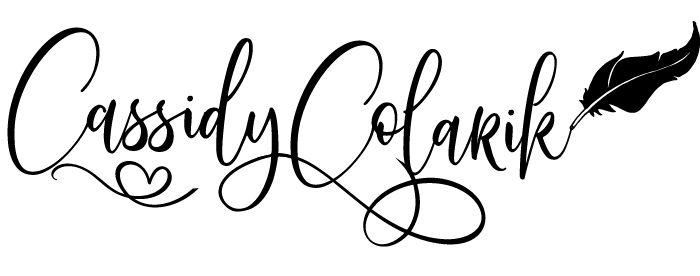Beautiful. Glamourous. Envy worthy. These words characterize an Instagram account that emerged on Aug. 1, 2016 and documented the life of 25-year-old Parisian, Louise Delage.
At a quick glance of her account, her lavish photos seem to suggest that she’s having the time of her life— drinking cocktails on yachts, eating at upscale restaurants, and sipping on champagne in a bathtub are just a few highlights.
The lavish lifestyle she created around her photos was well received and quickly resulted in over 66,000 followers in just one month; with each photo posted she received a stream of admiring commenters. “Wow you’re beautiful!” wrote one social media user. Similarly, another user wrote, “Super cute!”
But on Sept. 30, 2016, Delage updated her account with a final post that was a video. The video fast forwarded through all of her 149 posts, zeroing in on a subtle connection–in each of the 149 pictures, she had been shown with an alcoholic beverage in her hand.
Louis Delage’s account had been staged to send an important message regarding alcohol awareness.
Louis Delage is a French student posing as a part of a campaign created by a Parisian Ad Agency, BETC for their client Addict Aide, a French organization that aims to raise alcohol awareness among young adults.
In France, “le binge drinking,” has become more common among individuals between the ages of 18 and 25 according to new figures from the National Institute of Prevention and Education. Around 46 percent of French young adults within that age range have participated in binge drinking at least once in 2015, compared to 33 percent 10 years ago.
Similarly, in the United States, the greatest frequency of binge drinking is found among women aged 18-34.
“About 90 percent of all alcohol consumed by young people is consumed during a binge drinking session,” said Dr. Thomas Frieden, Director of the Center for Disease Control in an article with CNN.
The Instagram account was designed to highlight the issue of hidden addiction and how it can be easily overlooked or concealed.
This concealment of alcoholism is defined by experts as a “high functioning alcoholic,” and they defy the stereotypical characteristics of alcoholics. For example, some common perceptions of alcoholics are that they have poor attendance at work, that they are unable to lead successful careers, that they always drink in the morning, and that they are homeless or old men.
In contrast, highly functioning alcoholics lead respectable lives, they fulfill their roles on a daily basis. They have outside accomplishments–they are good students or have a successful career. They appear to the outside world to be managing well as a husband or wife, sibling, child or other relative, friend or coworker, all while drinking alcoholically.
In the book “Understanding the High-Functioning Alcoholic,” written by Sarah Allen Benton, she quotes Dr. Mark Willengring of the National Institute on Alcohol Abuse and Alcoholism,
“People can be dependent and not have abuse problems at all. They’re successful students. They’re good parents, good workers. They watch their weight. They go to the gym. Then they go home and have four martinis or two bottles of wine. Are they alcoholics? You bet.”
This can make it difficult to get them the help they need because they do not meet the criteria for alcohol abuse outlined in the psychiatric diagnostic manual.
The characteristics of high functioning alcoholics as defined by experts, aligns with the persona BETC curated for Louise.
BETC president Stephanie Xiberras Paris told Adweek, “We were briefed on the difficulty of detecting the addiction of someone close to you—a friend, a child or a parent. We thought an interesting way of showing it would be to create a person people would meet every day but whom we’d never suspect of being an addict, by setting up a fake Instagram account.”
In order for their campaign to be effective, Xiberras explains the strategy the agency implemented to generate high visibility for the account in a short period of time.
The team posted two to three times a day when users are the most likely to be checking their account—in the morning, at lunchtime, and late at night. BETC also studied fashion bloggers’ content and the filters they commonly utilize.
To ensure Delage’s account received traffic, each post included a various set of 20 hashtags pertaining to fashion, food, nature, and parties. BETC also implemented the key opinion leaders’ strategy they had developed. This strategy consisted of teenage key opinion leaders (with around 20,000 to 100,000 followers) to talk about the account and spread it among followers.
While BETC’s strategy to gather attention to the page was successful, very few picked up on the subliminal message of the account.
Louis Delage’s Instagram account demonstrates that the glamorous persona we create online is not always what it seems.
“We hoped for more followers to take notice of Louise’s behavior. There were a few people who sensed the trap—a journalist among others, of course—but in the end, the majority just saw a pretty young girl of her time and not at all a kind of lonely girl, who is actually not at all that happy and with a serious alcohol problem,” comments Xibberas.
However, hours after the video reveal, Addict Aide’s website saw five times more traffic, became a trending topic on twitter in France and spurred 500,000 shares across social media platforms according to Mashable.com.
This campaign serves as a public service announcement for developing an awareness level for factors that indicate one is a highly functioning alcoholic.
“Hopefully the campaign has served as an eye-opener for some,” Xiberras said in an interview with Mashable.com. “I hope they will contact Addict Aide or other local organizations working to help people struggling with addiction.”


